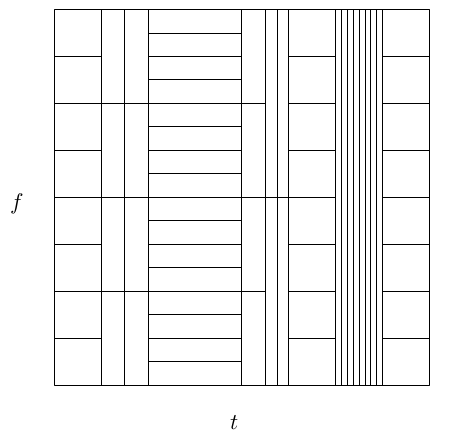| << Chapter < Page | Chapter >> Page > |
Up to this point, we have developed wavelet methods using the series wavelet expansion of continuous-time signals called the discrete wavelettransform (DWT), even though it probably should be called the continuous-time wavelet series. This wavelet expansion is analogous tothe

Fourier series in that both are series expansions that transform continuous-time signals into a discrete sequence of coefficients. However, unlike the Fourier series, the DWT can be made periodic ornonperiodic and, therefore, is more versatile and practically useful.
In this chapter we will develop a wavelet method for expanding discrete-time signals in a series expansion since, in most practicalsituations, the signals are already in the form of discrete samples. Indeed, we have already discussed when it is possible to use samples ofthe signal as scaling function expansion coefficients in order to use the filter bank implementation of Mallat's algorithm. We find there is anintimate connection between the DWT and DTWT, much as there is between the Fourier series and the DFT. One expands signals with the FS but oftenimplements that with the DFT.
To further generalize the DWT, we will also briefly present the continuous wavelet transform which, similar to the Fourier transform, transforms afunction of continuous time to a representation with continuous scale and translation. In order to develop the characteristics of these variouswavelet representations, we will often call on analogies with corresponding Fourier representations. However, it is important tounderstand the differences between Fourier and wavelet methods. Much of that difference is connected to the wavelet being concentrated in bothtime and scale or frequency, to the periodic nature of the Fourier basis, and to the choice of wavelet bases.
Parallel to the developments in early chapters on multiresolution analysis, we can define a discrete multiresolution analysis (DMRA) for , where the basis functions are discrete sequences [link] , [link] , [link] . The expansion of a discrete-time signal in terms of discrete-time basis function is expressed in a form parallel to [link] as
where is the basic expansion function of an integer variable . If these expansion functions are an orthogonal basis (or form a tight frame), the expansion coefficients (discrete-time wavelet transform) arefound from an inner product by
If the expansion functions are not orthogonal or even independent but do span , a biorthogonal system or a frame can be formed such that a transform and inverse can be defined.
Because there is no underlying continuous-time scaling function or wavelet, many of the questions, properties, and characteristics of the analysisusing the DWT in Chapter: Introduction to Wavelets , Chapter: A multiresolution formulation of Wavelet Systems , Chapter: Regularity, Moments, and Wavelet System Design , etc. do not arise. In fact, because of the filter bank structure for calculating the DTWT,the design is often done using multirate frequency domain techniques, e.g., the work by Smith and Barnwell and associates [link] . The questions of zero wavelet moments posed by Daubechies,which are related to ideas of convergence for iterations of filter banks, and Coifman's zero scalingfunction moments that were shown to help approximate inner products by samples, seem to have no DTWT interpretation.

Notification Switch
Would you like to follow the 'Wavelets and wavelet transforms' conversation and receive update notifications?